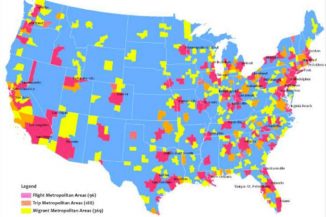Student athletes increase the diversity of schools. Which universities draw students from distant and diverse locales? We put together “pull power statistics” for 160,000 student-athletes from more than 1,600 university team rosters at 128 schools over various years. Stats include mean distance traveled, count of unique hometowns, percentage of international student-athletes, and a new distance decay “apex” method to rank schools by their pull power. Western U.S. (like U. Idaho and U. Arizona) and private schools (like Harvard) lead the ranks. Schools like Rutgers, Catholic University, UMBC and U. Illinois-Chicago have a lot of local student athletes.



























